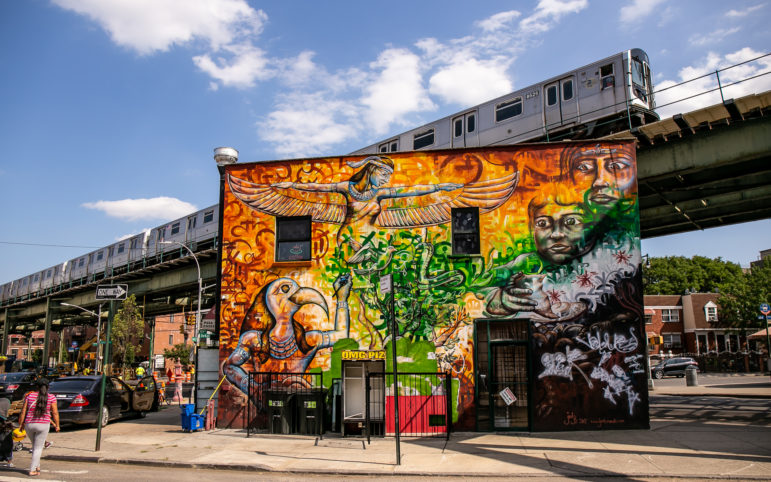
Adi Talwar
Intersection of Myrtle, Central and DeKalb Avenues. The proposed Bushwick rezoning will test how much impact a locally generated plan in a land-use process dominated by mayoral power.The year that ended Tuesday night generated a raft of headlines concerning how New York City treats its scarcest resource — land — in significant ways.
Some of those storylines will continue into 2020, while other new topics of concern are likely to emerge.
One thing is certain: With nearly 60,000 people in homeless shelters, public housing facing severe financial and infrastructure challenges and climate change imperiling some waterfront developments, housing affordability remains the city’s defining policy problem.
The Big Stories of 2019
Rent regulations: In June, in a major win for tenants, the state passed the first major pro-tenant reforms to the rent stabilization system in over 20 years. The updates to the laws included removing a decontrol rent threshold that allowed apartments to be taken out of the stabilization system, removing the ability to raise rents upon a vacancy and limiting the amount landlords can pass on in rent increases following an apartment renovation.
Rezonings: The de Blasio administration achieved its seventh neighborhood rezoning, in Staten Island’s Bay Street neighborhood, in June. Late in the year, the administration suffered at least a temporary legal setback when a judge annulled the 2018 Inwood rezoning, citing flaws in the environmental review.
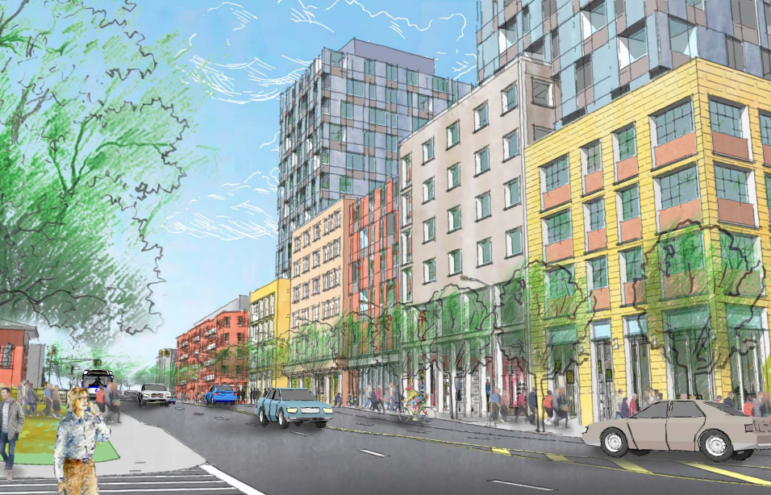
NYC DCP
A rendering in a de Blasio administration presentation on the rezoning envisions what the new Bay Street corridor will look like.Charter whiff: A charter revision process that was supposed to deal with the city’s land-use process, and which heard proposals for launching a comprehensive planning system, punted on all of that.
Homelessness: The de Blasio administration said it had “broken the trajectory” of homelessness, dealt with sometimes ugly neighborhood opposition to new shelters, agreed to set aside 15 percent of housing units in city-subsidized buildings for homeless individuals or families, and launched a new street-homelessness initiative.
Public housing: NYCHA saw a settlement agreement between City Hall and federal prosecutors, the arrival of a new chairman and federal monitor, the release of long-awaited state funding, and a bogging-down of the development process that is supposed to transform “underused” NYCHA land into new revenue.

MOCJ
A city rendering of how the new jail in Queens might look.Replacing Rikers: A little over two years after the mayor joined a growing chorus calling for the jails on Rikers to be shuttered, the Council approved the construction of four new borough jails that will help facilitate ending the island penal colony.
Coastal resiliency: As the Army Corps of Engineers outlined the options it is considering for harbor protections to shield the city from rising seas, the Council approved the controversial East Ride resiliency project and Mayor de Blasio outlined an ambitious (if somewhat fluid) plan to protect lower Manhattan, as other shoreline neighborhoods marked Superstorm Sandy’s seventh anniversary with very little resiliency accomplishments to point to.
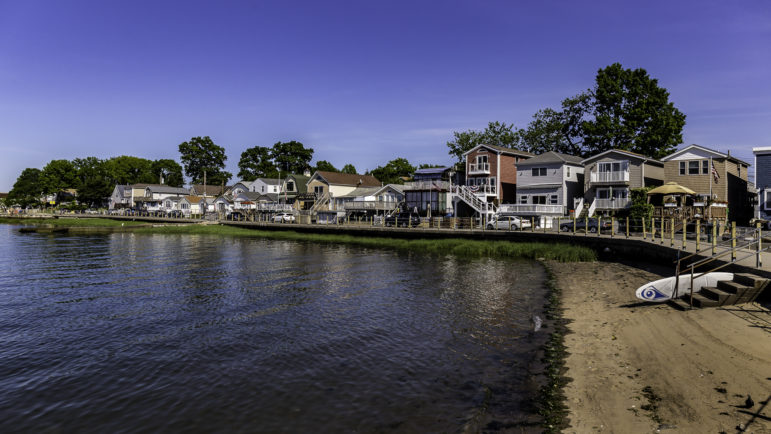
Adi Talwar
View of the Northern shoreline of Edgewater Park in the Bronx. The neighborhood poses special challenges for resiliency measures, and few homeowners have taken steps to adopt them.What’s ahead in 2020
Now that 2020 has dawned, here are the big land-use stories that Mapping the Future is tracking:
The rezonings: Last month, Bushwick community members, groups and local elected officials sent a letter to the de Blasio administration asking for the city to meet the community’s demands. A group of local stakeholders generated their own blueprint, known as the Bushwick Community Plan (BCP), for rezoning the neighborhood. The mayor’s proposal differs in significant ways from the Bushwick Community Plan. The letter asked for both plans to be considered during the environmental review that must start before the rezoning can enter the city’s formal review process. The stakeholders’ letter asked for a response by January 10. The Department of City Planning has told City Limits the environmental impact statement for the Bushwick rezoning is tentatively expected before the summer this year. Meanwhile, in Gowanus, local Councilmembers Brad Lander and Stephen Levin, community residents and groups are awaiting the environmental impact statement from the city while citing some concerns over specific impacts. And in the Bronx, the Southern Boulevard neighborhood study is nearing its end and residents, local businesses and local elected officials are awaiting to see what the city’s proposal holds for their community.
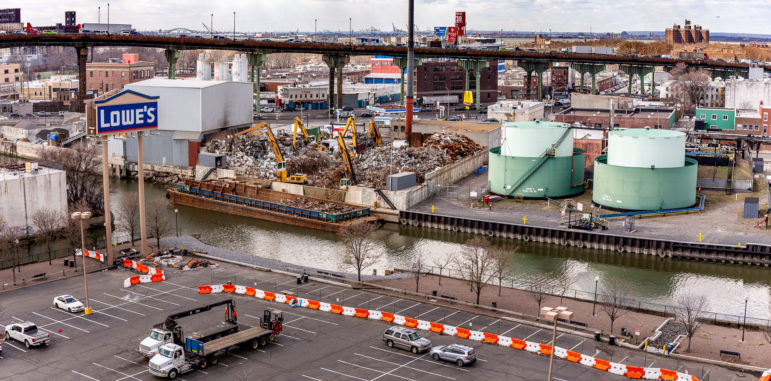
Adi Talwar
Industrial areas in the southern part of Gowanus won’t be part of the rezoning, to the disappointment of many. A separate process is on tap to assess its needs, but its timing is a concern.Court rulings loom: In December, a Supreme Civil Court Judge ruled the Inwood rezoning was annulled because the city’s environmental review process did not take requests, such as including the impact on displacement based on race or income, from the community into consideration. The administration said it would appeal the judge’s decision while Inwood Legal Action said it was ready for the fight in appellate court. In August, another Supreme Court judge also sided with the community groups in Two Bridges, the City Council and the Manhattan Borough President had filed multiple lawsuits against development projects. The lawsuits contended the city should not have approved the “minor modification” of a large-scale development and the project should have a public review process and the judge agreed. The city is appealing this decision as well. Meanwhile, a decision in the lawsuit over the city’s community preference policy is expected at some point.
NextGen next steps: As a task force tries to salvage a proposal to develop NYCHA land in Chelsea for mixed-income housing, the authority will be under pressure to advance other development plans and move more units into federal programs that convert public housing to Section 8, as both are key elements of the city’s latest plan to save NYCHA. Meanwhile, observers will watch to see if an infusion of state and city money and the presence of a new chairman and federal monitor deliver discernible improvements in conditions for tenants.
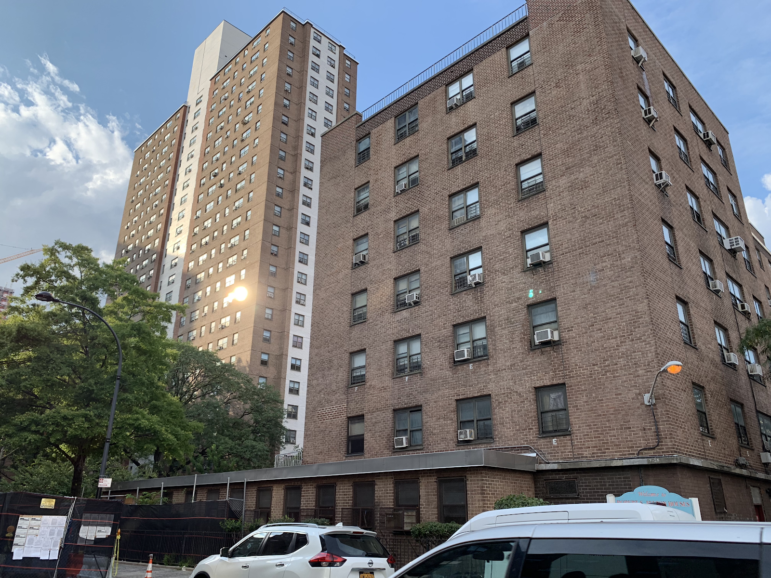
City Limits / Harry DiPrinzio
According to NYCHA, Fulton Houses needs $168 million in repairs.Fair housing: The city’s WhereWeLive NYC report is due before spring 2020. Under President Obama, the federal Department of Housing and Urban Development moved to require states and cities to study how their housing policies affect segregation. But the Trump administration stalled that effort. New York City in 2018 launched WhereWeLive NYC, its own segregation study, to fill the vacuum left by the feds.
Council considers land-use legislation: Public Advocate Jumaane Williams, Coucilmember Rafael Salamanca and community groups are pushing for legislation to add a component to the city’s environmental review process studying the impact of development along racial lines. Among other land-use measures, Queens Councilmember Francisco Moya is hoping to advance two pieces of legislation he introduced in 2017, one that would require the city to study and report on the school capacity impacts of land-use decisions and another that would require the city to study secondary displacement resulting from neighborhood rezonings.
The Corps says more: Last year in February, the Army Corps of Engineers released an interim report on defensive measures including seven miles of tidal gates and 26 miles of shoreline structures like floodwalls, as well as other alternatives for defending the city against rising seas and more intense storms. The Corps expects to release a full report this year in March, which should identify the path it plans to take.
The 2020 elections: Many of the leading Democrats seeking the presidency have outlined aggressive housing platforms, and control of the White House and Congress will determine whether there’s any hope for federal help on public housing.

Nick Solari
Sen. Bernie SandersHomelessness: Advocates will once again push for a statewide housing voucher program, as the de Blasio administration’s progress on ending the use of cluster sites and hotels, creating new shelters and reducing street homeless remains under the microscope.
Property-tax reform: A Daily News editorial Thursday summed up the situation. “The mayor has yet to offer a long-promised plan to reform the city’s arcane, unfair property tax system,” the paper wrote. “Rightsizing will rouse opposition, but de Blasio has no re-election looming, no political blowback to face if he braves an attempt at getting reforms done. He dare not punt to a successor.”
The Census: Determining where growth has occurred and how the city’s demographic mix is changing — overall and by neighborhood — will be vital to understanding the impact of housing policies under the current mayor and his predecessor.
Did we miss something? Let us know which land-use stories most interest, excite or worry you.








